Theraputic Massage in Lake Atitlan Resort
Pamper yourself with a theraputic massage at Los Elementos Day Spa. Enjoy a massage with th...
Hidden deep within Guatemala’s cloud forests, the Resplendent Quetzal is a bird of legend. Sacred to the Mayans, elusive to birdwatchers, and breathtaking to behold, spotting one in the wild is an experience few forget. In this guide, we’ll share the best places and expert tips to increase your chances of seeing this rare and magnificent creature.
Guatemala is a birdwatcher’s dream. With over 700 species filling its forests, rivers, and highlands, the country is a haven for anyone with a pair of binoculars and a sense of adventure. But no bird captures the imagination quite like the Resplendent Quetzal.
Not many people know that the quetzal was so revered by the ancient Maya that only kings and priests were allowed to wear its shimmering green tail feathers. These feathers were never plucked—the birds were set free after their feathers were collected, a sign of the civilization’s deep respect for nature. Today, the quetzal remains Guatemala’s national bird, appearing on its flag, coat of arms, and currency.
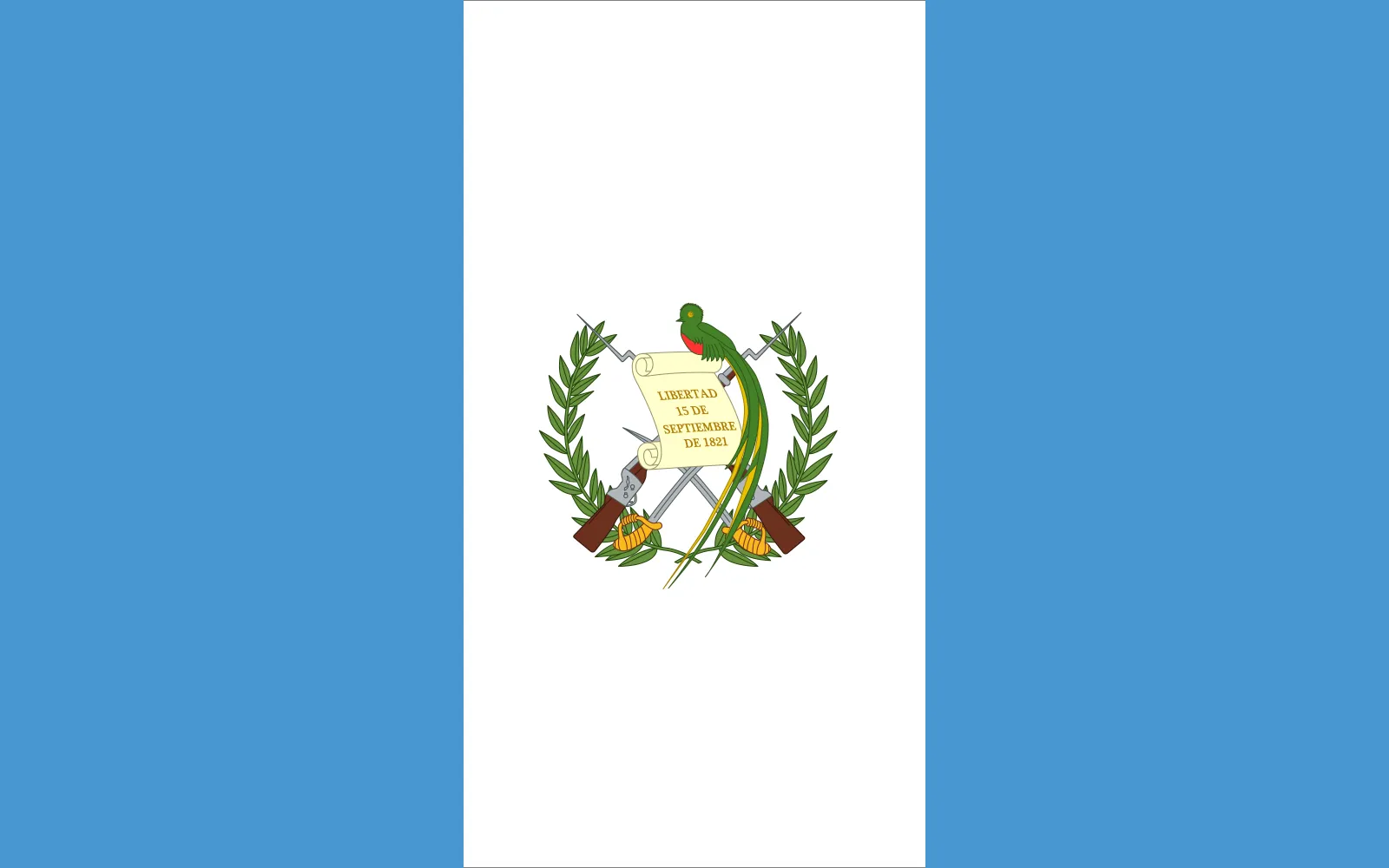
In this blog, we’ll explain where to find the Resplendent Quetzal, the best time to spot one, and expert tips that make all the difference.
If one bird could embody the spirit of Guatemala, it would be the Resplendent Quetzal. This bird isn’t just rare and beautiful—it carries centuries of cultural significance.
To the Maya and Aztecs, the quetzal was considered a messenger of the gods. Its name comes from the Nahuatl word "quetzalli", meaning "long, brilliant feather." It was believed that a quetzal would die of sadness if kept in captivity, which is why it became a symbol of freedom—a belief that continues today.
In modern Guatemala, the quetzal represents national identity. It even lends its name to the country’s currency, the Guatemalan Quetzal (GTQ). Spotting one in the wild is an almost spiritual experience, and for many, it’s a once-in-a-lifetime sighting.
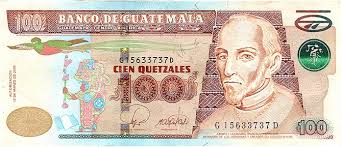
The quetzal isn’t just admired for its beauty—it carries deep spiritual meaning for the ancient Maya and Aztecs. To them, this bird was more than just part of the natural world; it was a messenger of the gods and a representation of the soul’s journey between worlds.
Not many people know that the quetzal was closely linked to Kukulkán (or Quetzalcoatl in Aztec culture), the feathered serpent god of wind, wisdom, and creation. The bird’s long green tail feathers were said to mirror the flowing movements of this deity, symbolizing the connection between earth and sky.
For the Maya, the quetzal’s freedom was sacred. They believed that capturing or harming a quetzal would bring bad fortune—a belief so strong that warriors would rather die in battle than be taken captive, just as the quetzal was said to die of heartbreak if kept in captivity.
Quetzal feathers were among the most valuable treasures of the time, often exchanged for jade, gold, and cacao. Unlike other cultures that hunted birds for their plumage, the Maya collected quetzal feathers carefully, releasing the bird afterward. This ensured that quetzals remained a symbol of life and renewal—a philosophy still reflected in Guatemala today.
While both male and female quetzals are beautiful, the males steal the show. During breeding season, their tail feathers can grow up to three feet long, making them one of the most spectacular birds in the world.
These birds are full of surprises. Their green feathers aren’t actually green—they only appear that way because of the way light refracts off their unique feather structure. This is what gives them that iridescent glow, shifting between emerald, turquoise, and gold depending on the lighting.
Watching a male quetzal in flight is like witnessing a ribbon floating through the sky. During courtship, they perform dramatic aerial displays to impress potential mates—a true spectacle for lucky birdwatchers.
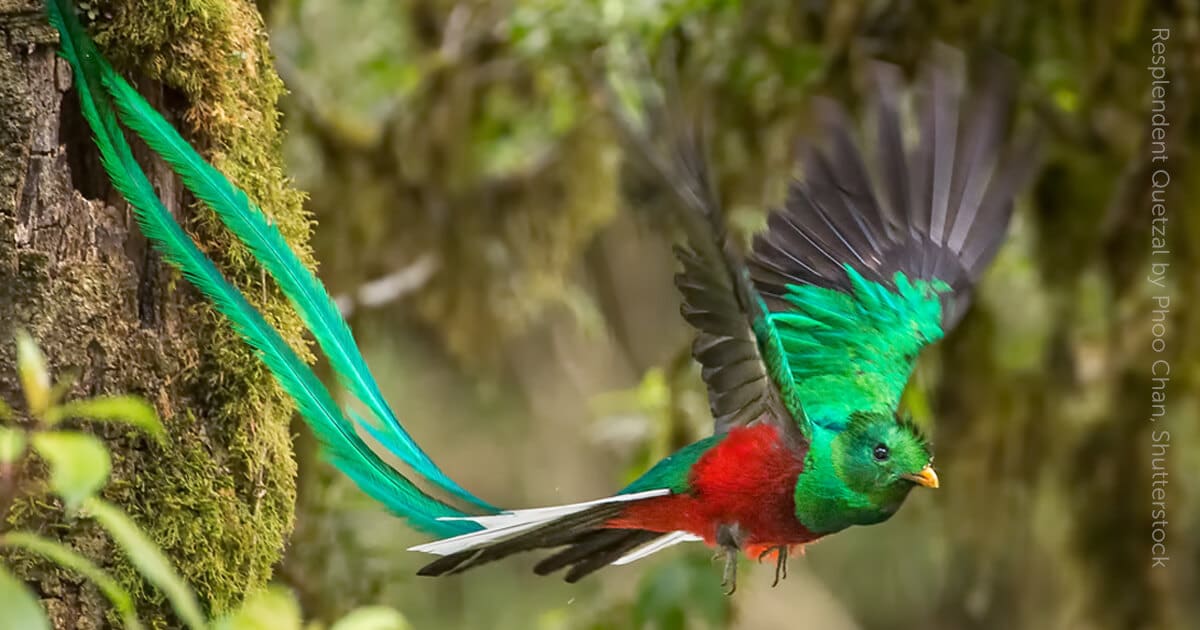
The Resplendent Quetzal is found only in the cloud forests of Central America, particularly in Guatemala, Costa Rica, and Panama.
In Guatemala, they favor high-altitude rainforests filled with wild avocado trees, one of their favorite foods. These trees grow in dense, misty environments, creating the perfect habitat for quetzals to hide.
Beyond their cultural significance, quetzals play a critical role in their ecosystem, particularly in maintaining the health of Guatemala’s cloud forests. These birds are what scientists call keystone seed dispersers, meaning they help forests regenerate by spreading seeds far and wide.
One of the quetzal’s favorite foods is the wild avocado, a small fruit that grows high in the canopy. Unlike many other animals, quetzals can swallow these fruits whole, later regurgitating the seeds in different parts of the forest. This process helps new trees grow, creating the dense, fruit-rich forests that many species depend on.
But life isn’t easy for a quetzal. In addition to habitat loss, these birds face natural predators such as snakes, hawks, and weasels. Their bright plumage may seem like an easy target, but quetzals have an advantage—their light, hollow bones allow them to maneuver swiftly through the dense jungle, making it hard for predators to catch them.
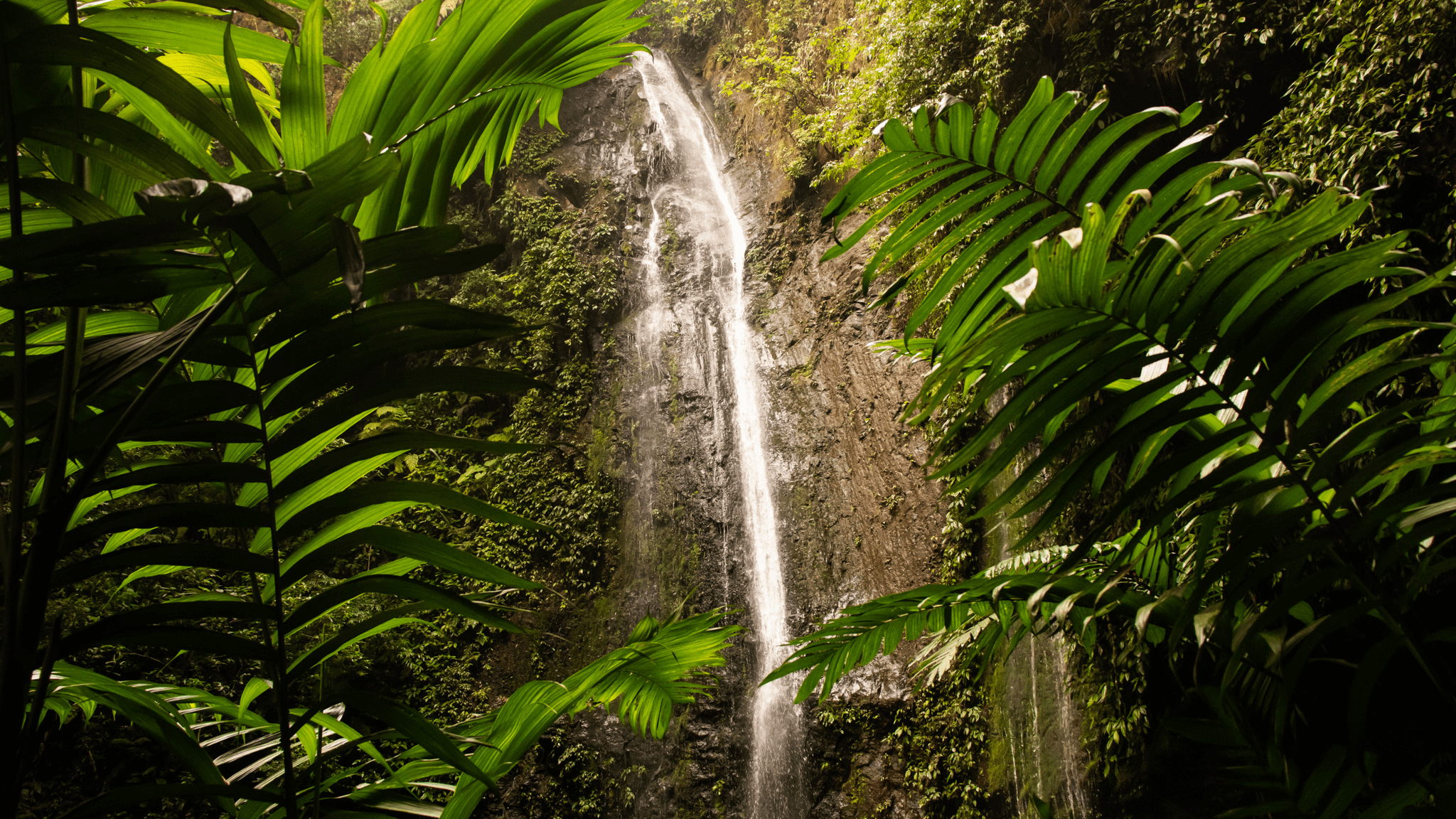
Another little-known fact: quartz-covered trees in cloud forests provide perfect camouflage for quetzals, making them nearly invisible when they stay still. This natural adaptation is why even experienced birders sometimes struggle to spot them!
If you’re serious about seeing a quetzal, head straight to the Guatemalan Highlands. This is where we take guests on our Guatemala Jungle Trek, an adventure through the remote El Rey Tepepul Municipal Park.
This park offers ideal quetzal habitat, with a dense canopy of fruit-bearing trees and hidden nesting spots. Our expert local guides know the best trails and recent nesting sites, greatly increasing your chances of spotting one.
Along the way, you might also see howler monkeys, coatimundis, colorful toucans, and even the rare horned guan—another bucket-list bird for serious birders.
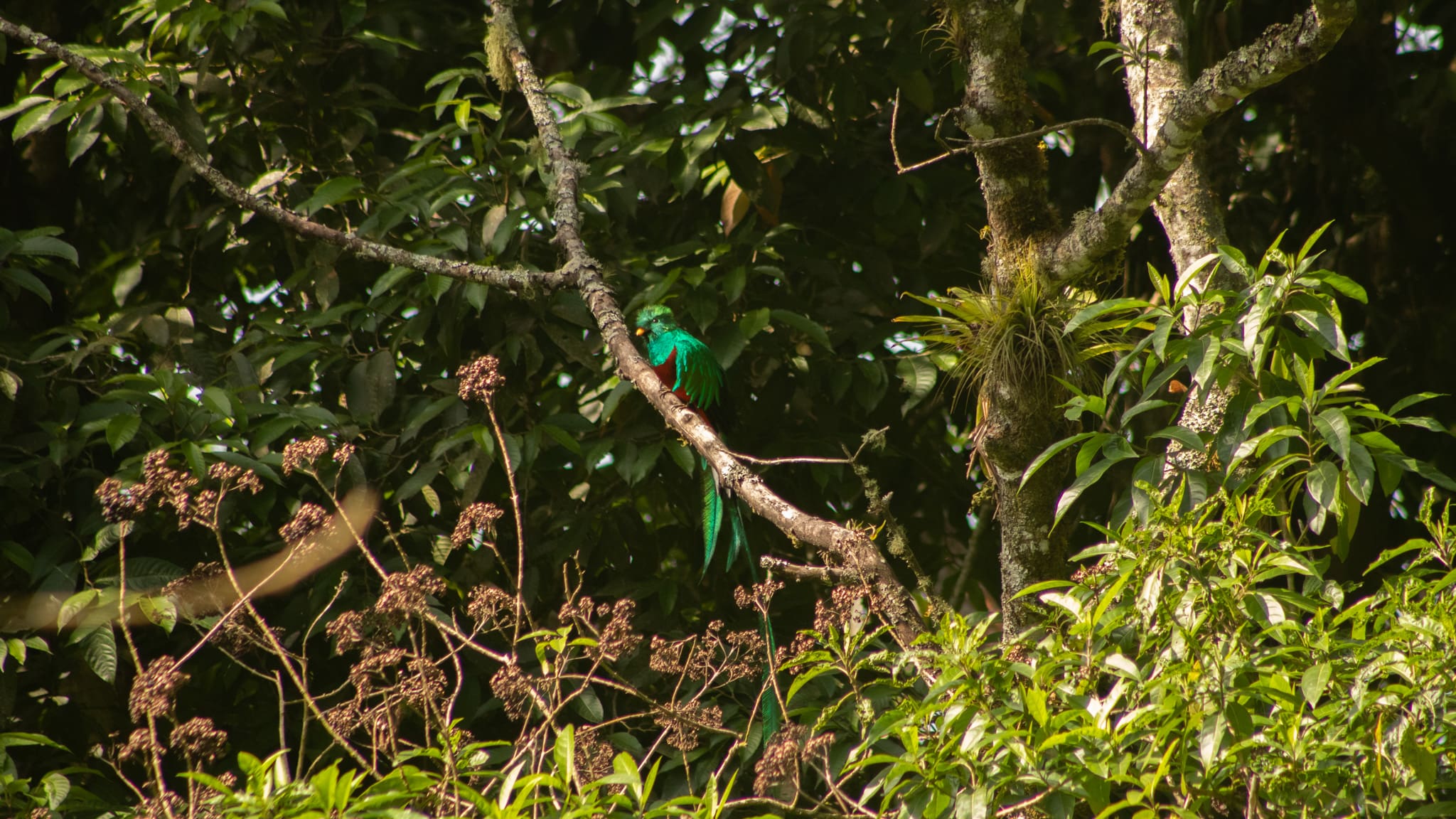
Yes, and deforestation is the biggest threat. As cloud forests shrink, quetzals are losing their breeding grounds and food sources.
Thankfully, local conservation efforts are helping. Reserves like Biotopo del Quetzal are working to protect their habitat, and ecotourism (like our guided tours) helps fund preservation efforts.
The best time to see a quetzal is during nesting season (March to June). Since they nest in tree hollows, guides can predict their locations, making sightings much more likely.
Having the right equipment can make or break your birdwatching experience. The Resplendent Quetzal is elusive, often perching high in the dense canopy, making good optics and stealthy gear essential.
Not all binoculars are created equal, especially when it comes to spotting birds in a misty cloud forest. Look for:
Brands like Nikon Monarch 5, Vortex Diamondback, or Zeiss Terra ED are solid choices for serious birders.
Quetzals tend to stay high in the treetops, so a camera with a powerful zoom lens is key. DSLRs or mirrorless cameras with a 300mm+ telephoto lens will give you the best chance of capturing their incredible colors. For travelers who prefer lighter gear, a high-quality bridge camera like the Sony RX10 IV is a great alternative.
Quetzals are shy and easily startled, so avoid bright colors that could scare them away. Stick to earth tones like green, brown, and gray to blend into the environment. Also, opt for quiet fabrics—clothing that doesn’t rustle when you move will keep you from disturbing the birds.
A good field guide will help you identify quetzals and other birds you’ll encounter. “Birds of Central America” by Andrew C. Vallely & Dale Dyer is a fantastic resource. Additionally, downloading apps like Merlin Bird ID or eBird can help you log sightings and get real-time updates on bird locations.
If you’re using a camera with a large zoom lens or binoculars for extended viewing, a lightweight tripod or monopod can help stabilize your shots and prevent arm fatigue. Compact models from Manfrotto or Vanguard work well for hiking.
Many birders like to log their sightings, especially if they’re tracking multiple species. Bringing a small waterproof notebook (like a Rite in the Rain journal) allows you to jot down notes on bird behavior, habitat, and exact locations to reference later.
The truth is, spotting a quetzal is never guaranteed—but having deep local knowledge makes all the difference. After guiding countless birdwatchers through Guatemala’s cloud forests, we know exactly where to look, when to go, and how to give you the best possible chance of seeing one.
If seeing a quetzal is high on your bucket list, let us take you on an unforgettable trek deep into their habitat. Learn more about our Guatemala Jungle Trek here.
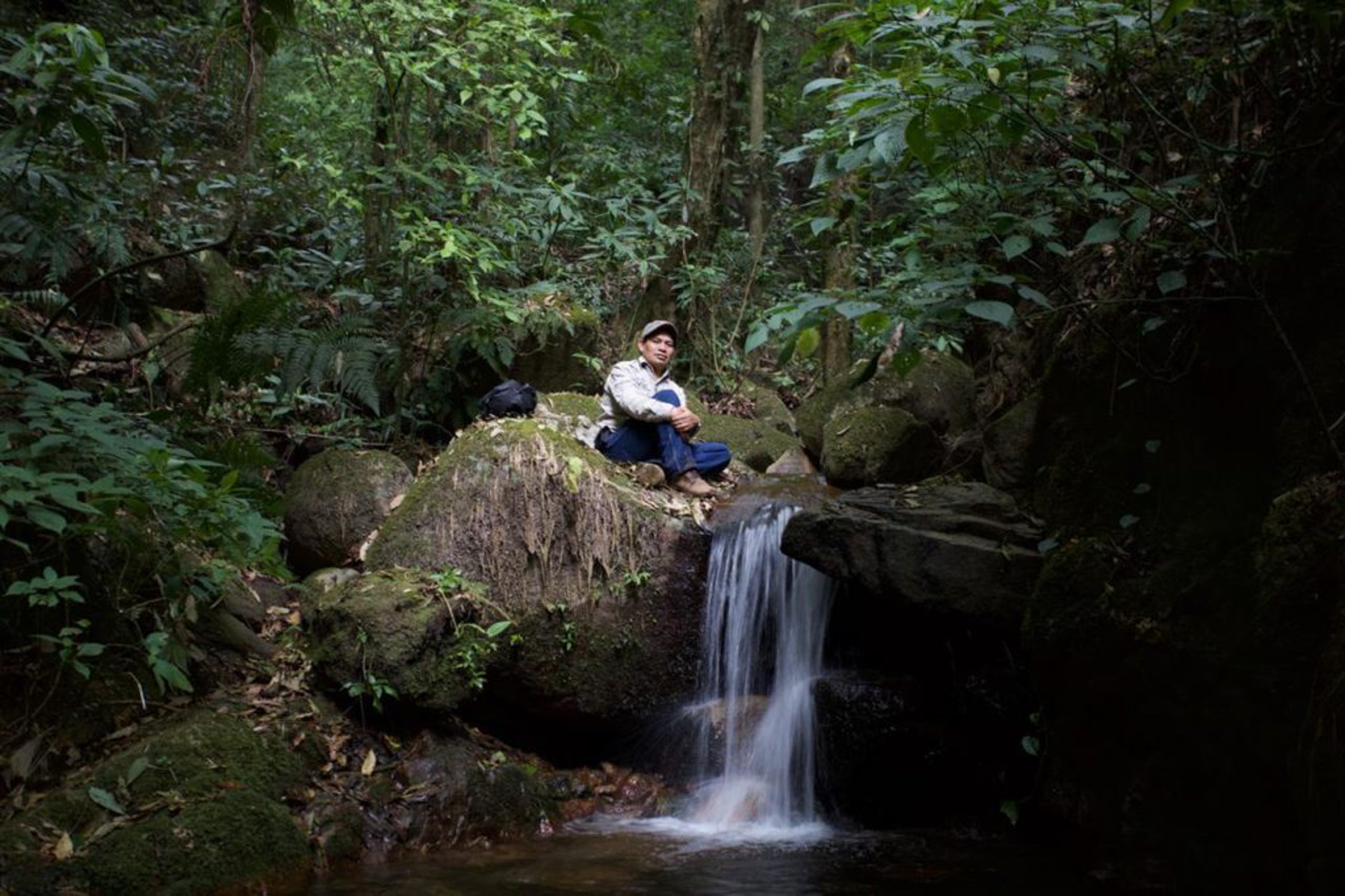
At Kayak Guatemala, we’re all about creating amazing adventures tailored just for you. We’re here to help you customize your vacation and experience the very best of Guatemala - just email us via booking@kayakguatemala.com to start the conversation.
